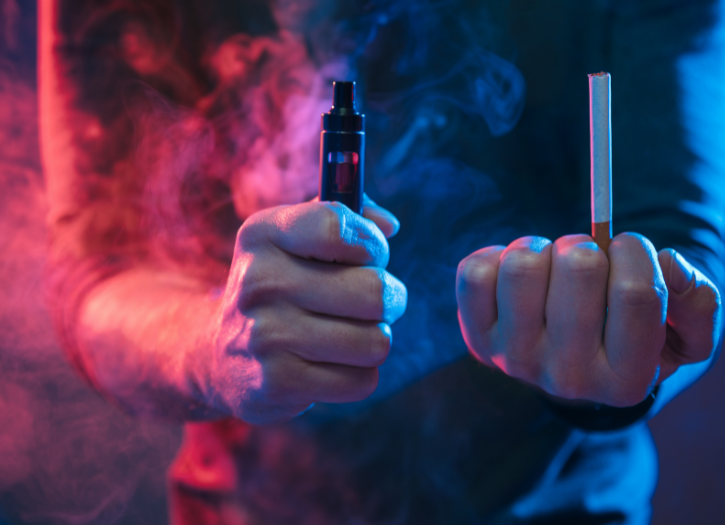Kicking the nicotine habit is a tough gig for lots of smokers aiming for a healthier life. Usually, the advice is to just quit cold turkey, which can be seriously hard if you’ve been smoking for ages. But vaping? It’s become a way for people to call the shots with their nicotine. They can actually dial it down bit by bit, making the whole quitting thing feel less like a total shock to the system.
James Smith is an expert on vaping and the Head of Community at DiscountVapePen.com. We asked him for his thoughts on how controlled intake with vaping is helping people build better habits, and what that could mean for everyone’s health down the line.
The Challenge of Nicotine Control
According to Smith, one of the most significant challenges smokers face when trying to quit is the all-or-nothing approach that traditional cessation methods often require. “Cold turkey quitting works for some, but many people experience intense withdrawal symptoms and cravings that lead to relapse. What vaping offers is a middle path, a way to maintain the ritual aspects of smoking while precisely controlling nicotine levels.”
This control represents a fundamental shift in how people approach nicotine dependence. Rather than viewing cessation as a binary state, either smoking or not smoking, vaping allows for a spectrum of nicotine consumption that can be gradually adjusted over time.
The Science of Nicotine Titration
The ability to precisely control nicotine intake through vaping is based on the concept of titration, i.e. adjusting the concentration of a substance to achieve a specific effect.
Smith says that with vaping, users can select e-liquids with specific nicotine concentrations, ranging from high levels comparable to cigarettes down to completely nicotine-free options. “This allows for a methodical step-down approach that many find more manageable than abrupt cessation.”
Research supports this approach for some users. A 2022 study found that smokers who used vaping as a titration tool had higher success rates in reducing overall nicotine consumption compared to those using traditional nicotine replacement therapies like patches or gum.
Creating Personalized Reduction Plans
The flexibility of vaping allows users to create highly personalized plans for reducing their nicotine dependence over time.
What works for one person may not work for another. According to Smith, “some do best with a very gradual reduction, perhaps decreasing their nicotine concentration by just 0.1% every few weeks.” But it’s far from being one-size-fits-all. “Others prefer a more aggressive approach, cutting their nicotine levels in half every month. Vaping accommodates both strategies and everything in between.”
This personalization extends beyond just nicotine levels. Users can also adjust their vaping frequency, device settings, and even the sensory aspects like flavor and vapor production to create a truly customized approach to habit change.
The Behavioral Component
One of the most powerful aspects of vaping as a tool for nicotine control is its ability to address both the chemical and behavioral dimensions of smoking addiction.
“Smoking is as much about ritual and habit as it is about nicotine,” Smith says. “The hand-to-mouth motion, the inhalation process, the social aspects. These behavioral components are deeply ingrained. Vaping preserves these elements while allowing users to separate them from high nicotine consumption.”
This dual approach helps explain why some studies have found vaping to be more effective than traditional nicotine replacement therapies for certain individuals. By maintaining the familiar behavioral patterns while controlling the chemical component, users can address their dependence more holistically.
Success Stories and Common Patterns
Through his work with the vaping community, Smith has observed several common patterns among those who successfully use vaping to control and reduce their nicotine intake.
Smith reports on smokers using what he calls a “three-phase process” to break the habit. “First, smokers switch completely to vaping at a nicotine level that satisfies their cravings. Second, they stabilize at that level for a few months, breaking the association with combustible cigarettes. Finally, they begin a gradual step-down process, reducing nicotine concentration at a pace that feels comfortable and sustainable.”
This pattern often leads to one of three outcomes: some users eventually transition to zero-nicotine vaping, maintaining the ritual without the chemical dependence; others quit vaping entirely once their nicotine dependence is sufficiently reduced; and a third group finds a low-nicotine maintenance level that represents a significant harm reduction compared to their previous smoking habits.
Addressing Common Concerns
Despite its potential as a tool for nicotine control, vaping is not without controversy or concerns.
Smith was quick to acknowledge that vaping isn’t risk-free, and it’s not the right approach for everyone. “The ideal scenario from a health perspective is to neither smoke nor vape. However, for those who’ve struggled with traditional cessation methods, the ability to control nicotine intake through vaping represents a practical harm reduction strategy.”







Add Comment